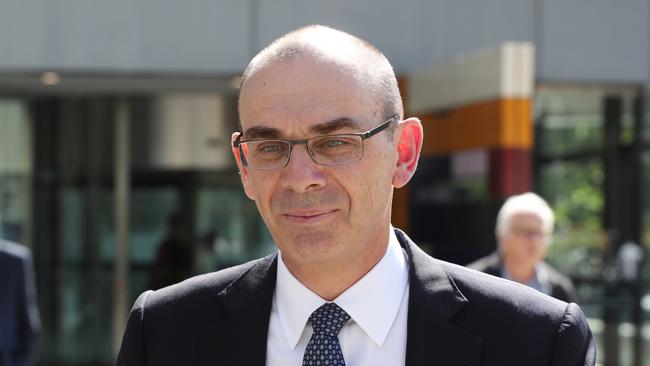APRA nobbled as ASIC takes charge
The prudential watchdog has had its powers nobbled in a comprehensive review of the ‘twin peaks’ regulatory model.

The prudential watchdog APRA, which emerged from the financial crisis as a renowned financial regulator, has had its powers and influence nobbled in a comprehensive review of the “twin peaks” regulatory model by the financial services royal commission.
While commissioner Kenneth Hayne recommended retention of twin peaks, the model will now be extended into superannuation, with the Australian Prudential Regulation Authority to relinquish responsibility for industry misconduct to a resurgent ASIC.
The Australian Securities & Investments Commission will also jointly administer the Banking Executive Accountability Regime, which will be broadened to apply not just to banking but to all APRA-regulated entities.
Mr Hayne, who pilloried both ASIC and APRA in his September interim report for their soft regulatory touch and reluctance to pursue court action, explained the new approach to super regulation by saying each agency would now concentrate on its traditional strengths.
“APRA’s skills are geared to prudential regulation,” he said.
“Its capabilities in respect of enforcement are less developed, and are currently the subject of an internal review.
“Its enforcement culture is similarly under-developed. Seldom, if ever, has it brought proceedings of the kind it instituted in December 2018 against persons and entities associated with (wealth manager) IOOF.”
Mr Hayne said ASIC’s expertise was in enforcement, so it was already primed to take on the extra responsibility of enforcing the Superannuation Industry Supervision Act.
The obligations faced by superannuation entities and their directors under the Act were also similar to the duties enforced by ASIC in relation to responsible entities of managed investment schemes under the Corporations Act.
The new structure represents a remarkable turnaround for ASIC’s fortunes under its new chairman James Shipton.
While both agencies earned the commissioner’s wrath in his interim report, APRA at least had the excuse that it was conceived as a prudential regulator and not a conduct policeman.
APRA appears to be paying the price for having powers under the SIS Act but not using them, at least until recently with IOOF.
The Wallis review of the financial system in the late 1990s also concluded that where an agency is charged with consumer protection and prudential regulation, the consumer protection tended to become subservient.
In a veiled criticism, Mr Hayne said in his final report that APRA’s approach to its core tasks was “supervisory suasion” conducted behind closed doors.
“The prudential regulator may wonder whether public denunciation of an entity might disturb the stability of an entity or the system,” he said.
“But, as I have said, deterrence of misconduct depends on visible denunciation and punishment.
“ASIC’s core work is consistent with that objective. APRA’s is not.”
APRA chair Wayne Byres said in a statement yesterday that the agency would review the recommendations related to a strengthening of the regulation of financial institutions and issue a more detailed response “shortly”.
Overall, Mr Byres said he was pleased that the recommendations chimed with APRA’s submissions in relation to preservation of the twin peaks model and an expansion of BEAR’s net to other industries.
He also welcomed a greater role for ASIC in superannuation. Mr Hayne noted there was a second overlap between conduct and prudential matters in the BEAR legislation.
While the BEAR contained accountability obligations, banks were also required to take reasonable steps to prevent matters from arising that would adversely affect the institution’s prudential standing or reputation.
The BEAR, therefore, had a conduct as well as a prudential outlook.
“There should therefore be co-regulation or joint administration of the BEAR by ASIC and APRA,” Mr Hayne said.
“ASIC should be charged with overseeing those parts of Division 1, 2 and 3 that concern consumer protection and market conduct matters, and APRA should be charged with the prudential aspects of Part IIAA.”
This would mean ASIC would be responsible for bringing any civil penalty proceedings to the extent that it related to conduct matters. APRA would be responsible for bringing any civil penalty proceeding for breaches of Part IIAA to the extent that they related to conduct matters.
Mr Hayne said it would be prudent to enable both regulators to seek disqualification of accountable people under the BEAR if they had breached their accountability obligations.


